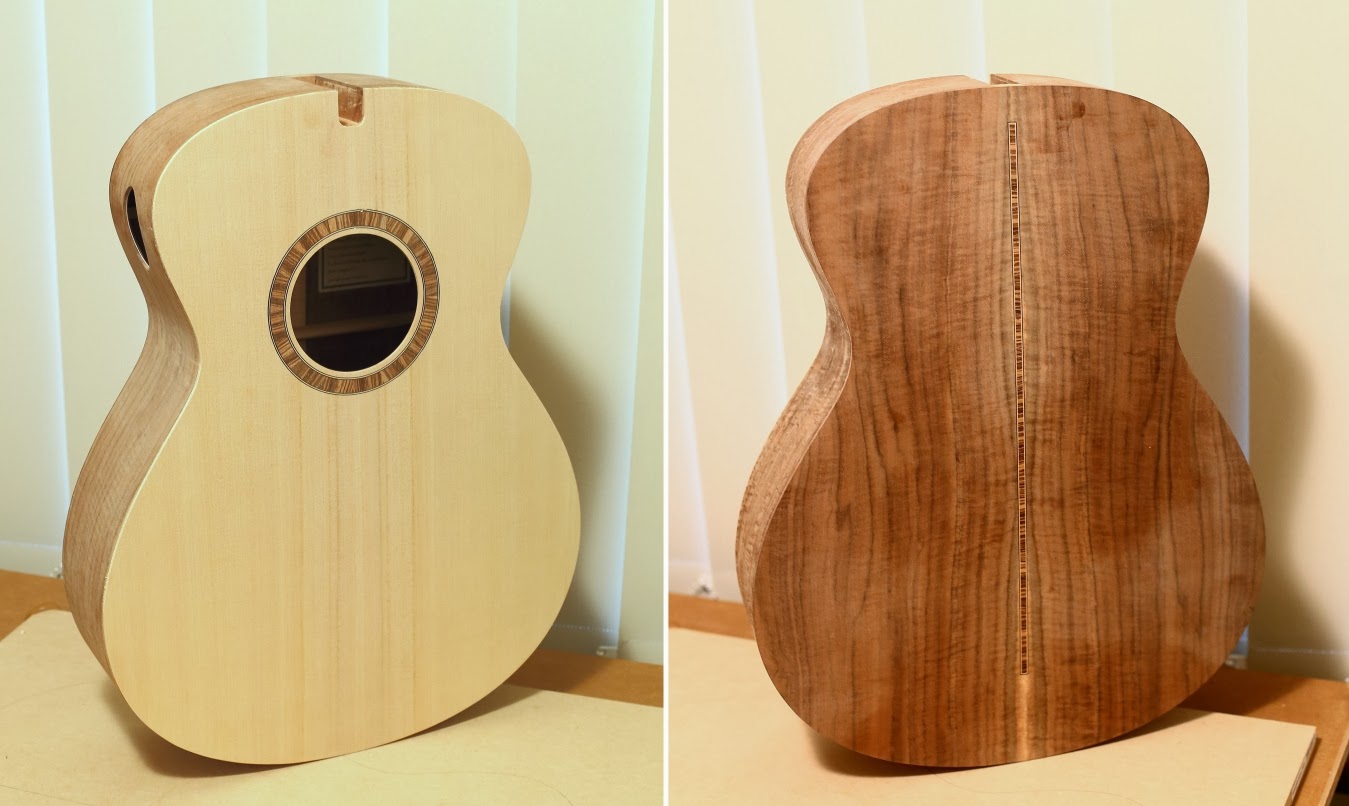Given the effort involved in binding a guitar headstock, I'm curious as to the upcharge a professional builder might reasonably apply, and whether a fee acceptable to the buyer could adequately compensate the builder!
Not only does my chosen headstock shape dictate that one of the sections of binding must conform to the tight curve at the extremity of the headstock, but mitering the individual binding pieces prior to gluing requires painstaking attention to detail. I know many builders cut these miters in-situ with a sharp chisel, but for better or worse, I choose to use my disc sander to do so prior to gluing them in place. As they're fitted dry in the first instance, I have the luxury of being able to discard any pieces whose miters don't meet my standards, with the need to start all over again acting as a strong incentive to get them right on the first attempt! With a light touch, and a patient approach that involves constantly checking for an exact fit, I'm able to produce tight fitting miters using this method.
Before I can think about mitres, however, I need to prepare the sections of ebony strip. The first step is to glue a black/natural purfling to one edge of the binding. I do so with the help of the clamps normally reserved for gluing kerfed linings, as the photo below shows. For the straight sections of binding, regular Titebond is adequate, but for those sections that will be bent into a curve - excluding the piece that fits the tightest curve and is treated differently - I like to use Titebond III, which is better able to withstand the heat involved in shaping the strips on my bending iron. Unless a piece of ebony is particularly reluctant to bend, I find they can usually be coaxed into shape without the use of water.
 |
| Gluing the black dyed and natural maple(?) purfling to the binding edge. |
 |
| Maple veneer glued to what will become the inner face of the bindings. |
 |
| Test fitting the first of the mitred corners, minus glue. |
It goes without saying that accurately positioning the binding pieces as they're glued and taped into position, then tightly butting up the adjoining piece as it in turn is glued, contributes to an acceptable outcome. Call me strange, but when carrying out tasks like this that demand my close attention, I find that tidying up my work space before I begin unclutters my mind as well as my workbench - the Zen of guitar building in action perhaps!
One concession I make these days is to acknowledge that the tightly curved section can more easily be fabricated from two thin pieces of ebony rather than a single full width piece. As anyone who has attempted to bend ebony into a tight curve on a bending iron can attest, this makes life a lot easier. Once glued, scraped and sanded, it's almost impossible to detect that this section of binding has been laminated. To begin with, I run two pieces of ebony binding through the drum sander until they're half the desired binding width. The pieces can then be bent on the bending iron until they conform to the curve without the need to be forced into position. Once I'm happy with the fit, I laminate the two pieces of ebony, adding a layer of maple veneer to what will be the inner face as I do so.
Because this section of binding is fabricated from two layers of ebony, it's not possible to edge the piece with a strip of black and white purfling prior to bending as I did for the other pieces. Instead, I wait for the glue to dry, then clean up and glue one of the edges to a piece of black and white veneer sheet that has been prepared earlier. Once the glue has dried, the surplus veneer is trimmed from the inner and outer faces of the ebony strip, duplicating the look of the other binding pieces.
 |
| Completed headstock |
Cheers
Pete
























